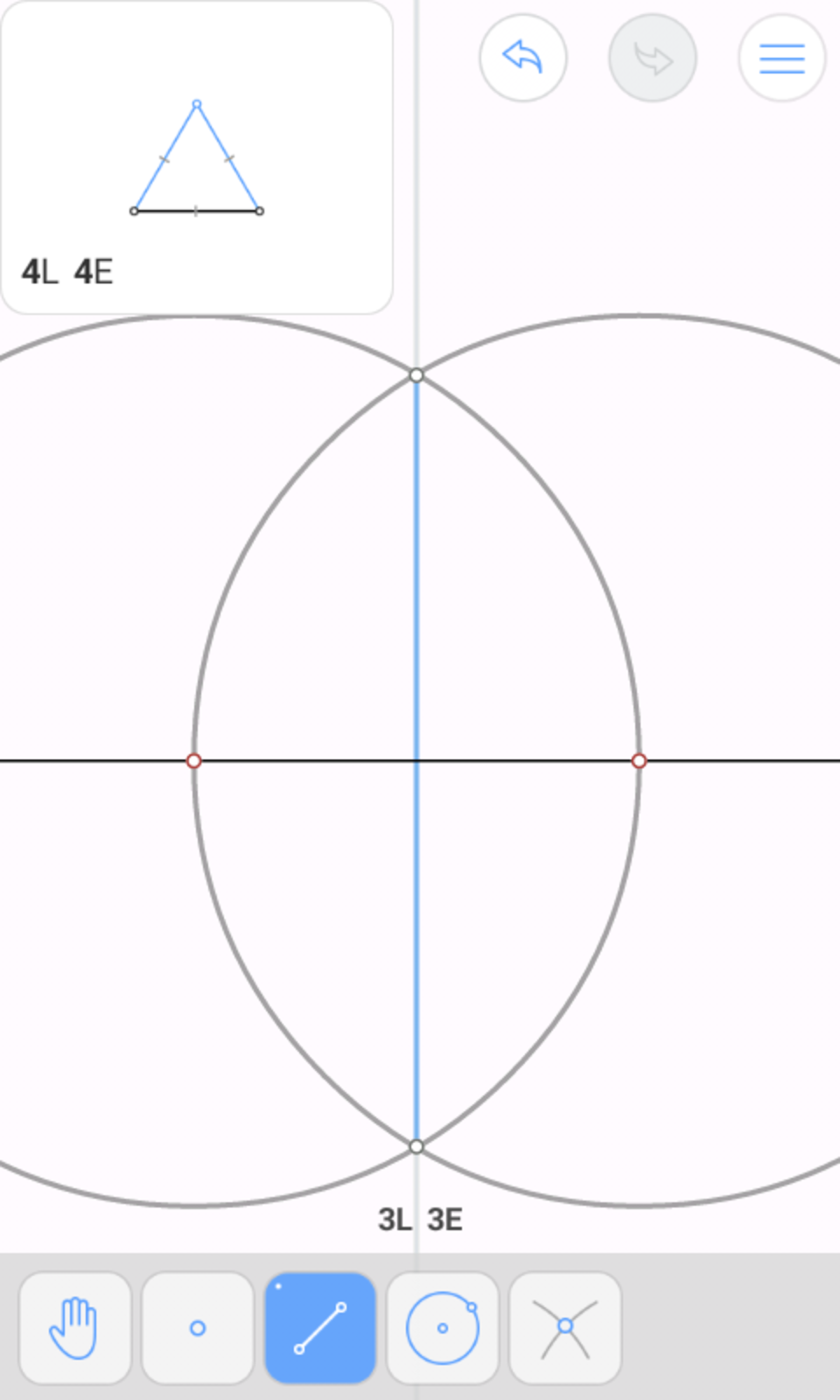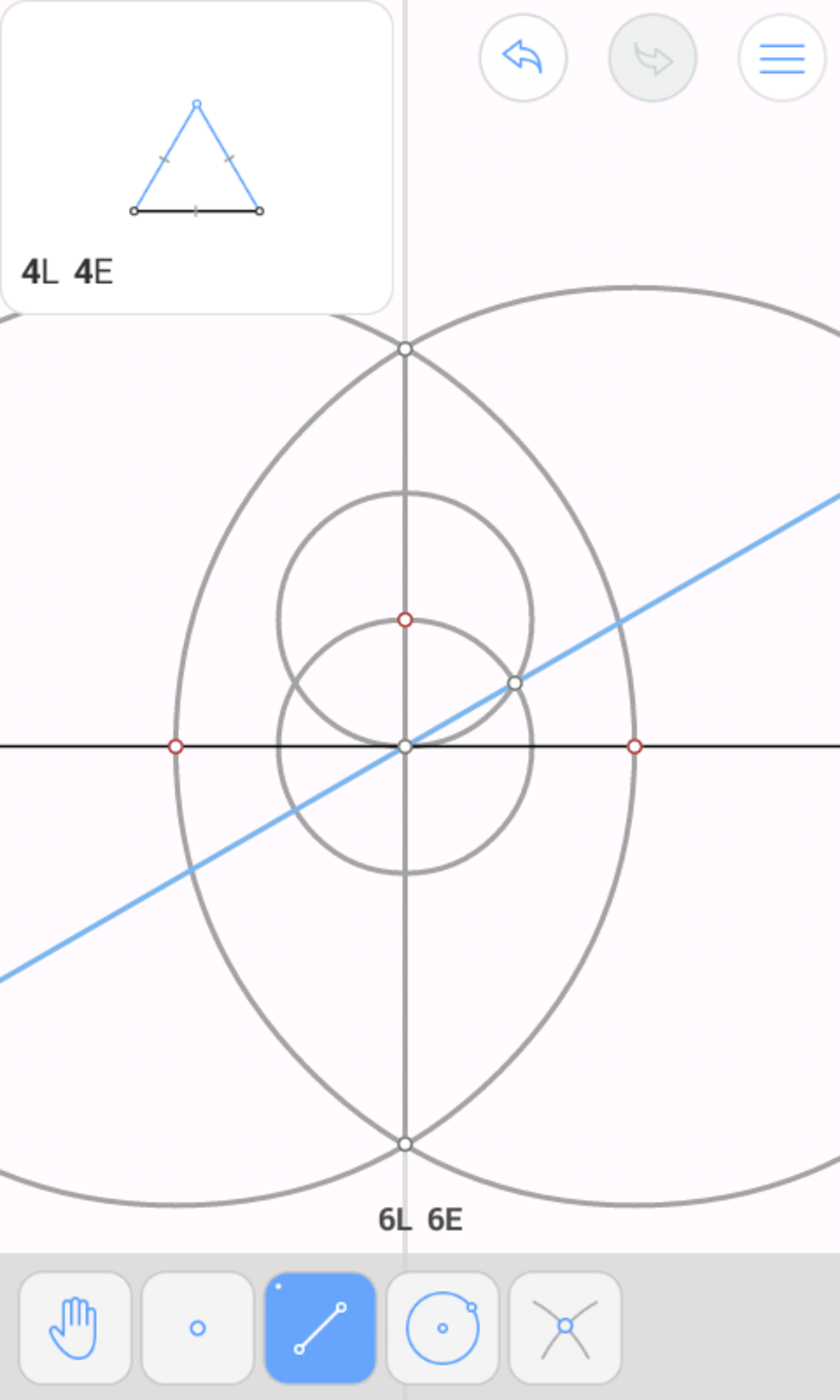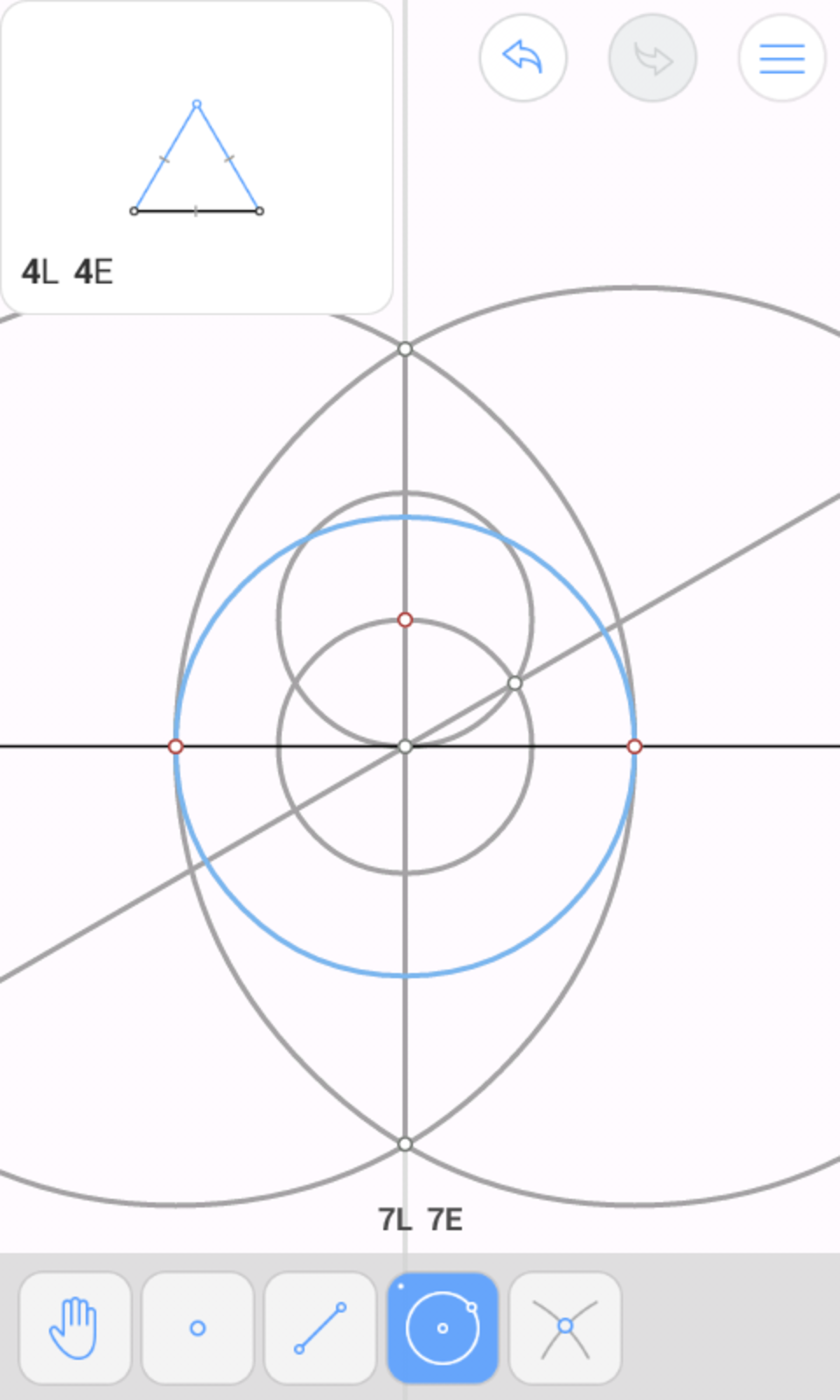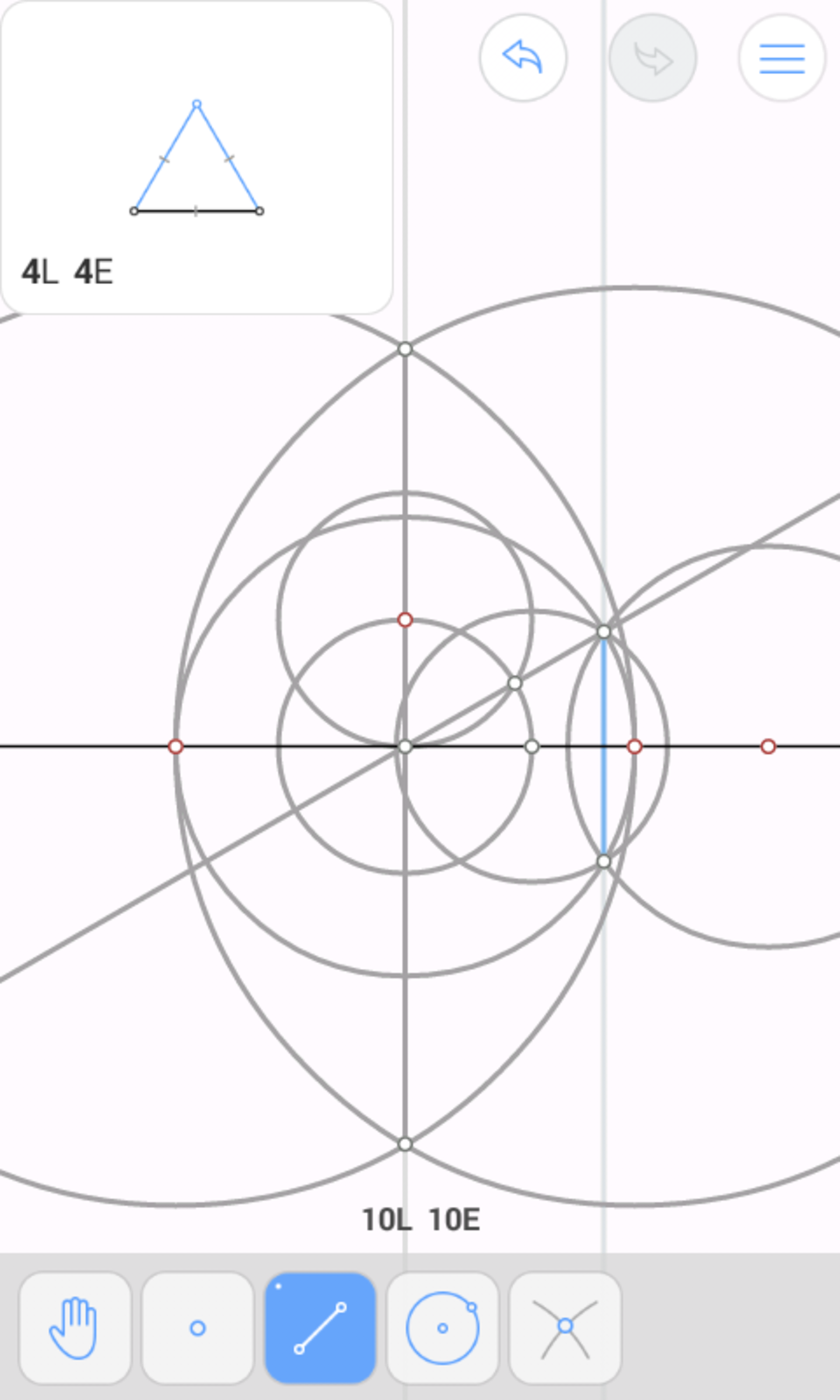Maybe, Maybe not
Geometry
Level
3
Can a straight line be divided in the ratio by using only compass and straightedge?
Depends on the length of line
No
Yes
This section requires Javascript.
You are seeing this because something didn't load right. We suggest you, (a) try
refreshing the page, (b) enabling javascript if it is disabled on your browser and,
finally, (c)
loading the
non-javascript version of this page
. We're sorry about the hassle.




Since ( 2 − 3 ) : ( 2 + 3 ) = 1 : ( 7 + 4 3 ) , we're looking to construct 1 + ( 7 + 4 3 ) 1 = 8 + 4 3 1 = 4 1 ( 2 − 3 ) of a line segment. Since this is a constructible number, the answer is yes .
One example construction: Call our line segment A B .
Proving it is easy. Treat A B as having 4 units length. Then A D = D C = 4 1 A B = 1 . Also, D E = D A = 1 , so C E = C F = 2 . Since A B is perpendicular to both D E and F G , the latter two are parallel. Since A B is parallel to E G , D E G F is a rectangle, so F G = D E = 1 . Thus C G = C H = 3 . So A H = 2 − 3 , and by subtraction, H B = A B − A H = 2 + 3 .